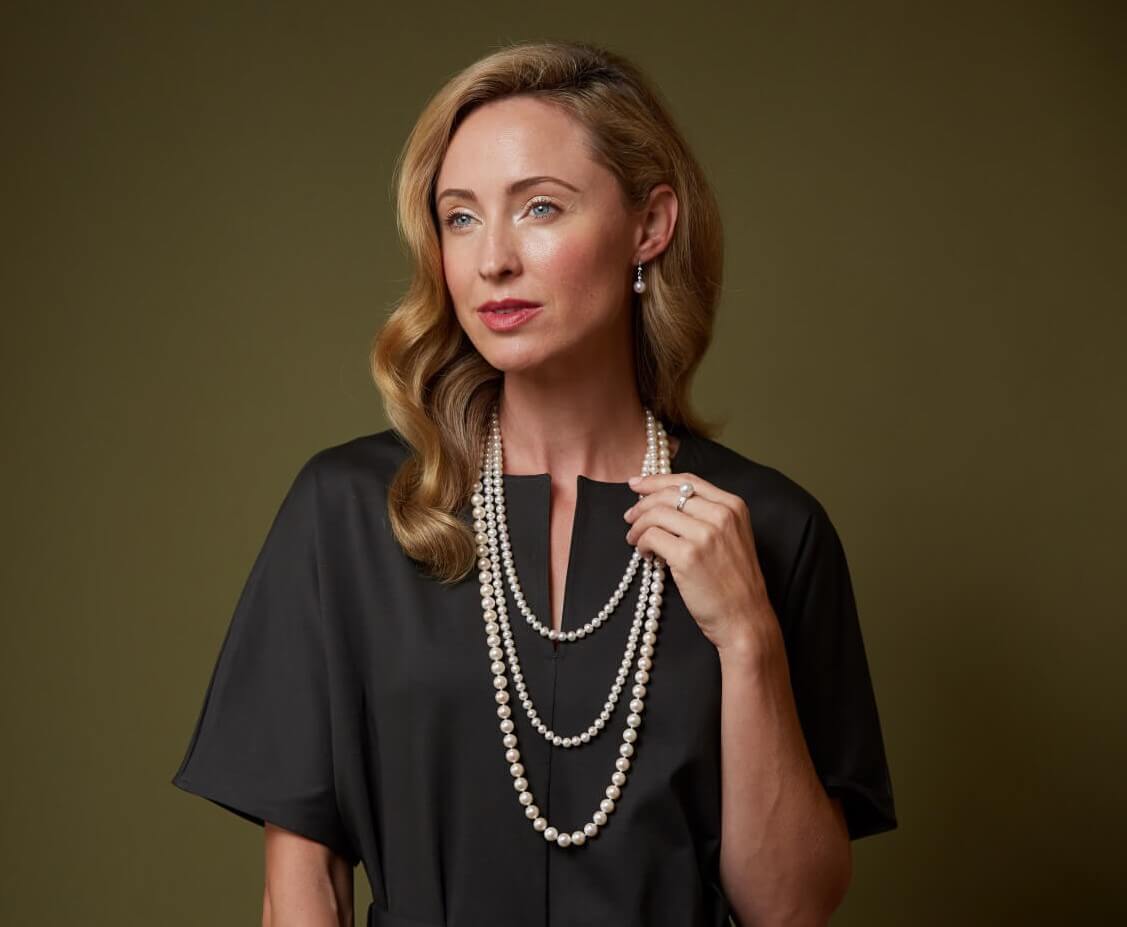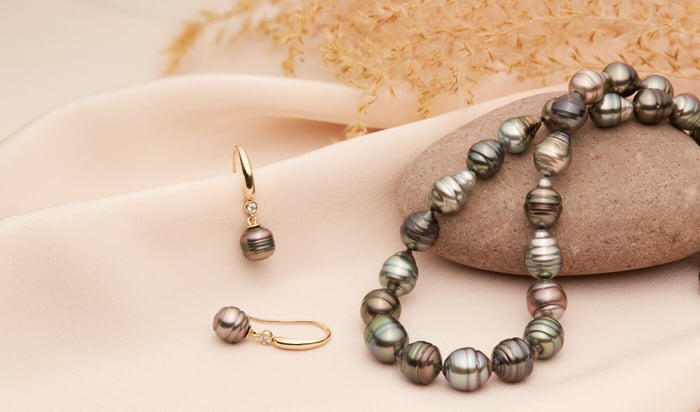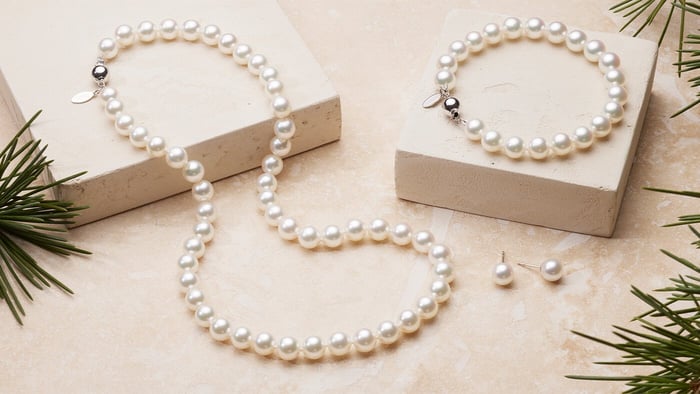A long pearl necklace is so much more than the sum of its parts
What’s better than a 16-inch strand of beautiful Akoya pearls? Two—or even three—of them. And not just that it’s two or three times better, we’re talking exponential improvement. How so? Because combining multiple strands is how we make a single long necklace, which in turn can be worn in a multitude of styles. It’s like getting three or four jewelry pieces out of one single pearl rope.
To learn how, let’s roll back to the beginning.
Pearls can be purchased loose, meaning individual pearls that are not drilled, or by the strand, which is a string of pearls that have been matched for shape, size, color, luster, and surface quality. Since the pearls are on a strand, they are obviously drilled, but they have not yet been individually knotted. A typical strand is 16 inches, but the number of pearls will vary based on the pearl size.

By blending two or more strands, you end up with a necklace that’s approximately 35 inches when taking into account knots and a clasp. And blending is where the artistry and expertise really come into play. “You’ll rarely have the same size pearls throughout the entire necklace,” says Hisano Shepherd, Pearl Paradise Chief Creative Officer. “So I’ll start by matching the smaller pearls, 9 millimeters, for example, and place those near the top or clasp end of the necklace and then graduate to larger pearls, like 11 millimeters, toward the bottom.” It’s a painstaking process that requires years of experience looking at millions of pearls to develop an eye for proper matching. And of course, then the pearls must be individually hand-knotted on the string, which can be either silk or synthetic. “For longer necklaces, we prefer synthetic, which is less prone to stretching under the weight of the numerous pearls,” says Hisano.
Quality control is paramount, according to Hisano. A single pearl that looks even the slightest bit mismatched means a portion of the necklace will need to be unknotted to replace it and then tied again. With some clients requesting necklaces of 100 inches or more, that’s a lot of work. “For something that long, we have a special room and table where we will close the door and tell everyone, ‘Do not enter!’” she says with a laugh. “It takes intense, uninterrupted concentration.”

In the end, what emerges is a true, one-of-a-kind work of art: a pearl rope that, depending upon its length, can be worn in a variety of ways: As a single, long loop; doubled or tripled, and draped at varying lengths, from choker and princess to matinee and opera; nested in even lengths; or looped into many small concentric rings for use as a bracelet. Pearl Paradise even offers a “convertible” style comprised of a matching necklace and bracelet that can be worn as two pieces or linked together for a longer rope that can then be worn in the numerous ways mentioned above.
Of course, a longer necklace means more pearls, which can mean a higher price point. But it doesn’t necessarily have to be a budget-buster. Certainly, if money is no object and you want and can afford a long necklace of the very finest-quality Tahitian pearls, good for you! But the beauty of a long, looped necklace is that the size itself conveys the wow factor and as such, it doesn’t necessarily need to be made of the highest-quality pearls to convey that pack a punch. Beautiful AAA-grade freshwater-pearl necklaces start around $390, and when you consider the versatility they provide, that’s actually quite a bargain!
Another option: If you already own a shorter necklace, we can find additional matching pearls and create a longer necklace for you.
The choice—or rather, choices—are yours!









